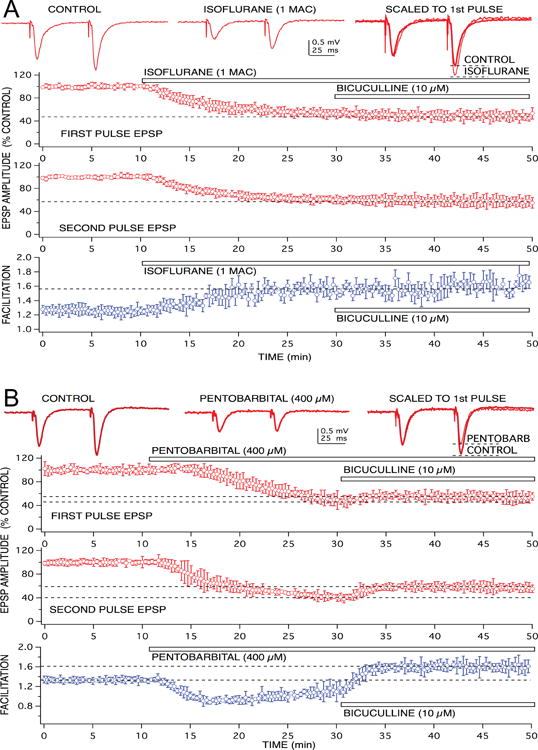Figure 2.

Anesthetics produced different effects on GABAA receptor-mediated feedforward inhibition at the level of CA1 neuron apical dendrites. Recordings of glutamate-mediated excitatory postsynaptic potentials (EPSPs) are shown at the top, in response to paired pulse stimulation of Schaffer-collateral fiber inputs. The volatile anesthetic, isoflurane (1.0 rat MAC = 1.5 vol % ∼ 350 μM) did not appear to enhance feedforward inhibition – evident as a lack of effect on paired pulse facilitation of EPSPs (A). Although EPSPs were depressed by isoflurane, responses still exhibited facilitation. In addition, the EPSP depression produced by isoflurane was not reversed using a GABAA receptor antagonist, bicuculline. This was evident in the time vs EPSP response amplitude graphs for both first and second paired pulse responses. In these and subsequent graphs, symbols represent the mean ± SD from at least five, time matched, experiments from separate slices. Isoflurane produced a 50% depression of EPSP amplitudes (when applied at the time indicated by the bar), when bicuculline was added to the preparation, in the continued presence of isoflurane, there was no additional change in response amplitude. Pentobarbital, in contrast, did appear to enhance GABAA receptor-mediated feedforward inhibition, because a clear depression of EPSP facilitation was produced by the barbiturate (B). In addition, pentobarbital-induced EPSP depression was partially reversed when bicuculline was applied in the continuing presence of the anesthetic.
